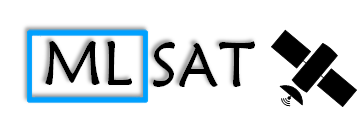
-
StatusCompleted
-
Status date2020-09-25
-
Activity Code1A.104
This project aims to identify problems in the field of satellite communications that are suitable for the methods and techniques provided by machine learning (ML) approaches.
It is investigated, if ML models can potentially represent an alternative to solve computationally expensive problems or can provide even performance gains w.r.t. traditional approaches in satellite communications.
In the course of this project, potentially adequate ML use cases in satellite communications are collected. A subset of these scenarios is selected for a proof-of-concept (PoC) implementation and performance assessment.
The challenge in this project is to identify problems in satellite communications that could benefit from the use of machine learning techniques.
Once a problem in satellite communication is selected, the target is to detect suitable ML algorithms for similar problems in other fields of application (i.e. computer vision, medical applications, etc.) that show a promising performance gain and then adapt them to the selected problem.
The quality of the training, validation and test dataset is crucial for the success of the ML model, since the dataset has to be well prepared in order to avoid over-fitting.
ML has already proven its capabilities in various fields of research i.e. image processing, speech processing etc. Due to the well-performing techniques, this project aims to identify suitable problems in satellite communications that could benefit from the ML approach as well.
The trained ML models in the PoC phase are aimed to tackle certain well-specified problems in the field of satellite communications. Depending on the individual use case, ML could provide a performance gain w.r.t. traditional approaches or reduce the problem complexity and increase the processing speed, since the processing intensive training and evaluation phase can be done in advance.
ML is applicable to problems with certain characteristics since ML actually exploits hidden patterns that are present in a dataset.
On that condition, ML in general is not limited to a certain field of application.
Introducing ML to satellite communications could lead to performance gains by utilizing well-trained ML models in various field of application such as e.g. time series analysis, prediction and system design.
Even in cases where traditional techniques cannot be replaced by ML models for reliability reasons, ML techniques could still be an option to enhance the traditional system resulting in better processing speed performances on ground or aboard of a satellite.
The ML algorithm is developed as a stand-alone model.
Training, validation and test datasets for the use case specific suitable ML models are generated based on measurement data and physical layer simulations.
The performance obtained by well-established approaches in satellite communications represents the baseline reference performance for the ML approach.
A specific ML approach is applicable for a certain problem, if the achieved performance either exceeds the reference, or meets the reference performance but significantly improves the processing speed.
The project is roughly structured in two steps, where in the course of step 1, potential application areas for machine learning in the field of satellite communication are investigated. From the list of identified use cases, a subset is selected for PoC.
The actual implementation and PoC is executed in step 2, which is concluded by a summary of potential future ML fields of application, guided by the obtained performance gains.
The project has been finished in 2020 with the deliverable of the final report and an executive summary. Several conference papers related to this activity have been submitted.





